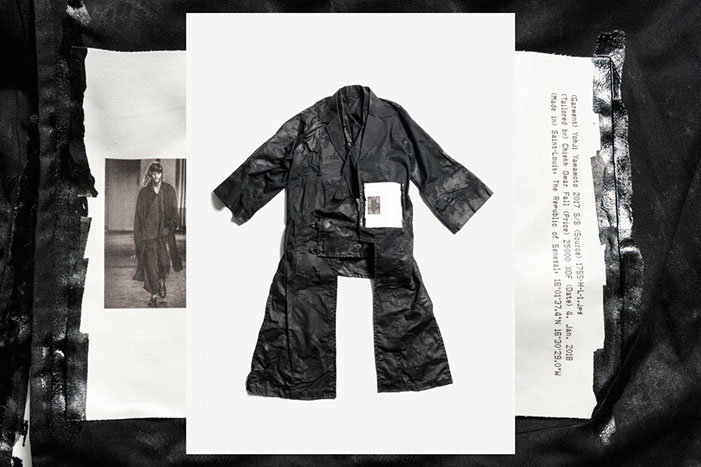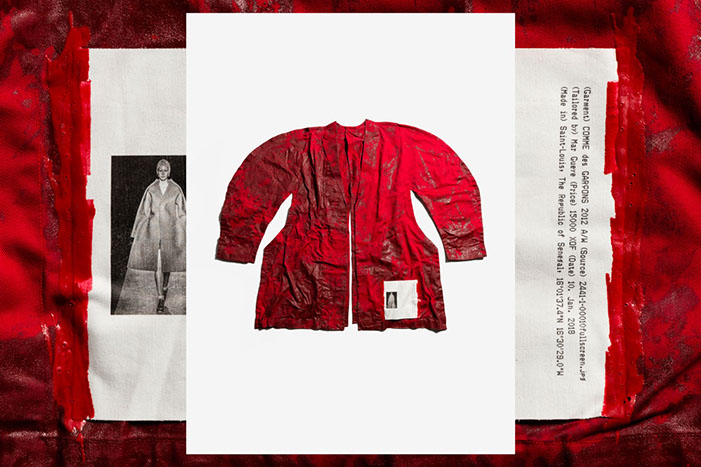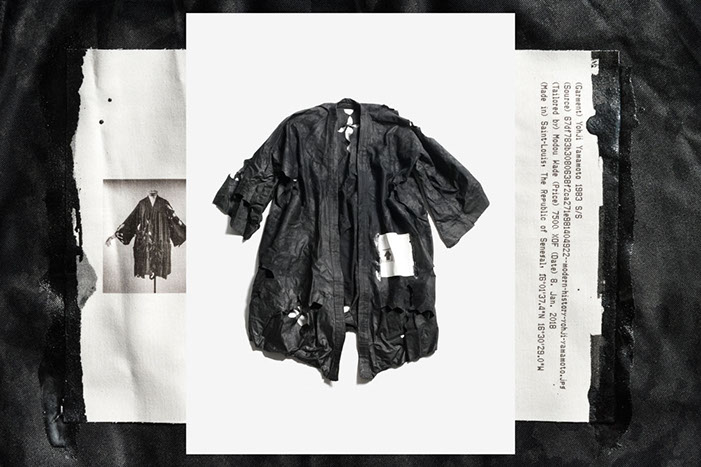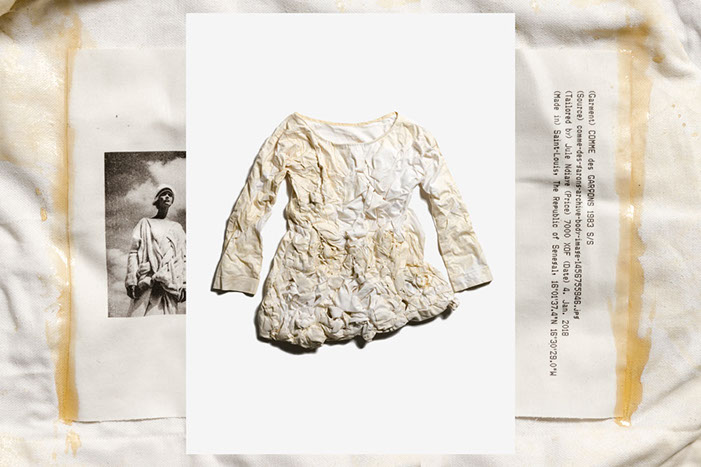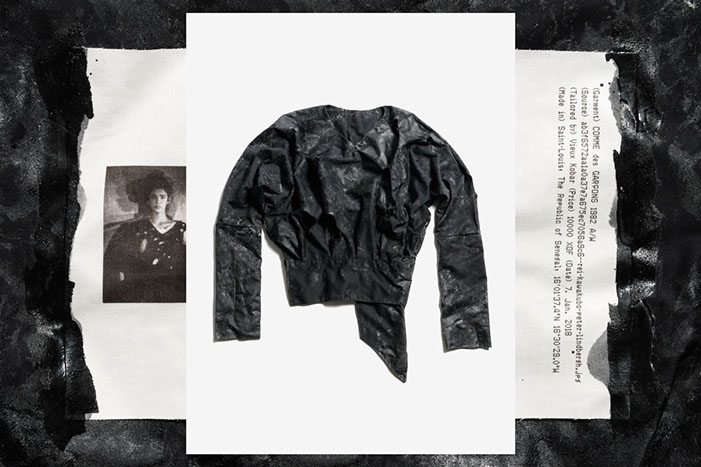'For Senegalese women, if given the choice of fashion or food, many would starve.'
The Republic of Senegal, where fashion reigns supreme. People buy their favourite textile at the fabric market and bring it to a tailor. These craftsmen of the cloth make garments based on the verbal requests that customers explain on the spot. Their dressmaking techniques have been passed down from father to son.
In the early 1980's, two young Japanese fashion designers, Rei Kawakubo and Yohji Yamamoto, presented their collections in Paris. It was the encounter that interlaced the Western and Japanese fashion worlds. Images of those two collections are still circulating on the internet, constantly duplicated and consequently continually degrading, a testament to the almost mythical reputation of this event in fashion history.
Fujita Keisuke first collected images of their debut and recent collections from the internet, choosing five outfits, then asked five Senegalese tailors to make it. Each outcome created from a single reference image contains their interpretations and techniques interwoven with their history and culture.
Within the cultural gap, our sameness is revealed. Looking through the lens of fashion we catch a glimpse of the thread of history, and a microcosm of globalization where Senegalese and western values merge and diverge.
「もしもセネガルの女性に服か食かの選択を迫ったら、多くの人は飢えてしまうだろう。」
豊かな服飾文化を持つセネガル共和国。人々は生地屋で布を買い、それを仕立屋に持ちこむ。テイラー達は顧客が口頭で説明するデザインの要望をもとに服を仕立てる。その技術は親から子へ、何代にもわたって伝えられてきた。
1980年代初頭、2人の日本人デザイナー、川久保玲、山本耀司はパリでコレクションを発表した。それはファッション界における、西欧モード界と日本との遭遇だった。インターネット上には繰り返し複製された当時の写真が、そのショーのファッション史における伝説性を演出するかのように、不明瞭な解像度で存在する。
藤田啓輔は当時のルックと最新コレクションから5着を選び、ウェブ上からダウンロードしたそれらの画像をもとに、5人のセネガル人テイラーに仕立てを依頼した。1枚の写真をたよりに制作された服には、テイラー達の解釈と技術、文化と歴史が込められている。
文化的な隔たりを明らかにする事はまた、多くの共通点を見出す事でもある。共有された時間軸の上で交わることのなかった価値観、交差して混ざる文化に、服飾文化を通じて眼差しを向ける。
